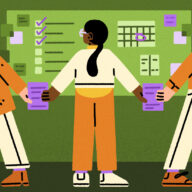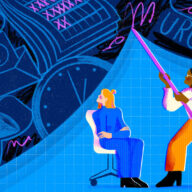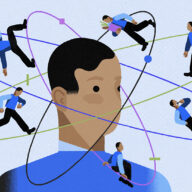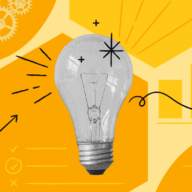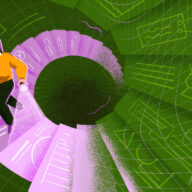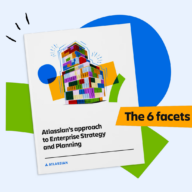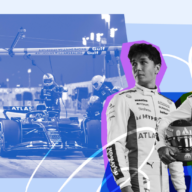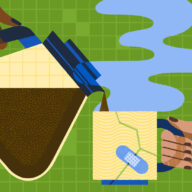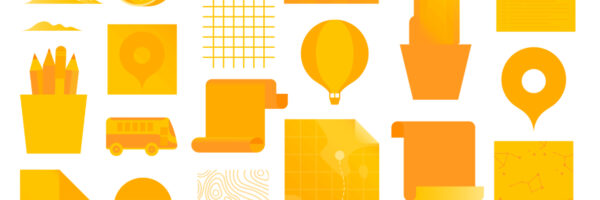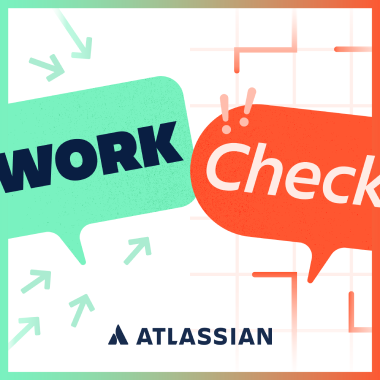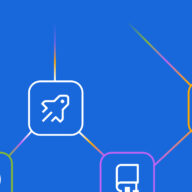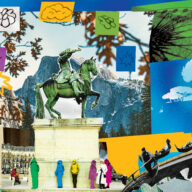Ahead of the Australian Grand Prix, Atlassian Williams Racing drivers Alex Albon and Carlos Sainz stopped by our Sydney HQ. We chatted about teamwork, sacrifice, and innovation – and yes, we asked Carlos about his haircare routine.
As Williams’ official Title and Technology Partner, we’re excited to help them level up their approach to technology and teamwork, especially as they gear up for major regulation changes in 2026.
Looking back at the season opener, Alex’s impressive fifth-place finish in Melbourne set a promising tone for Atlassian Williams Racing as a top midfield contender. His performance got a boost from some clutch strategic input from Carlos – a split-second moment in the garage that showcased true teamwork. With the season now well underway, that race remains a key reminder of the team’s potential.
Read on for highlights from our conversation:
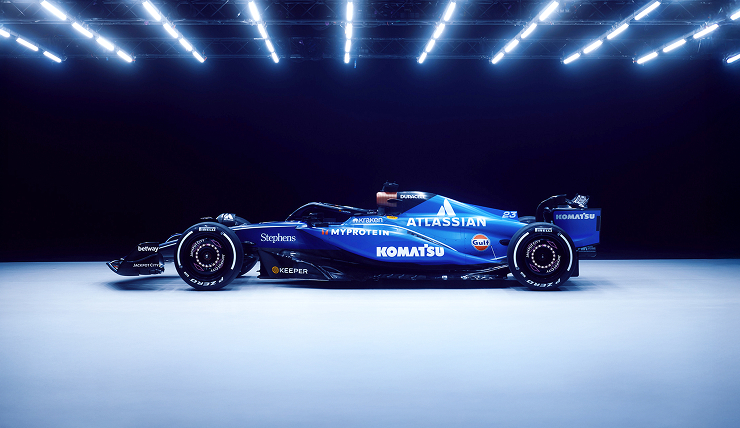
Why 2025 is the “year of sacrifice”
Atlassian: You’ve both talked about 2025 being a year of sacrifice for Atlassian Williams Racing. What does that mean, and how does it fit into your long-term vision of winning?
Alex: We’re facing huge changes in 2026. The cars will change massively, and so will the engines. Normally in F1, it’s either the car design or the engine regulations that get updated – not both at once. Having them change simultaneously is something we haven’t seen in over a decade.
Getting ahead of these regulation changes is crucial. With Atlassian joining us, we’re implementing software changes behind the scenes that will bolster us up. We’re already in a much better position now than we were in previous years.
Our vision isn’t just to compete in the midfield – we want to be fighting at the top.
Alex Albon
Our vision isn’t just to compete in the midfield – we want to be fighting at the top. That’s why we’re making strategic sacrifices this year to prepare for next year’s opportunities. We’ve committed to longer-term contracts because we see the vision.
Atlassian: When do you get to drive the ’26 car?
Carlos: We don’t actually get to drive the finished car until January next year, but all the development work is happening right now back at base.
Alex has already driven a simulated version of the future regulation car, I haven’t yet. Every time we go back to the factory, out of eight hours of driving in the simulator, we’ll probably allocate half – or a quarter – to the 2026 car. The same is happening in the wind tunnel: most of our developmental simulations will focus on ’26. That doesn’t mean we’re giving up on ’25 at all – I still want to see the team progressing and doing well this year. We’re just putting most of our eggs into ’26 because of the big opportunity it brings.
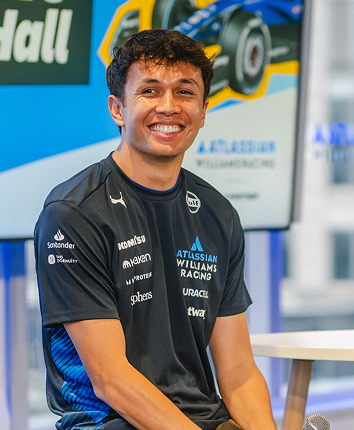
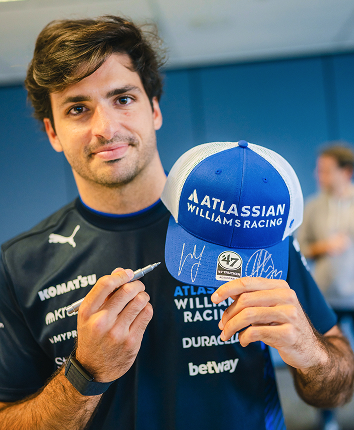
How 1,000+ people come together to build one F1 car
Atlassian: Formula 1 is no doubt an incredible feat of teamwork. Where does it start, and how do 1200 people work together on one car? What’s the timeline?
Alex: A technical director will be able to explain in more detail, but I know that a Formula 1 project normally starts 18 months before the car is driven on track. Back at base, engineers and the technical team begin designing the car – asking where are we going to go with aerodynamics, suspension, engine placement, gearbox, and so on. You start transmitting more and more manpower towards that project. It begins with maybe 10 engineers designing the core concept, then expands to 100, 500, and eventually 800 people as manufacturing begins. And suddenly there’s whole factories working on that car a year later.
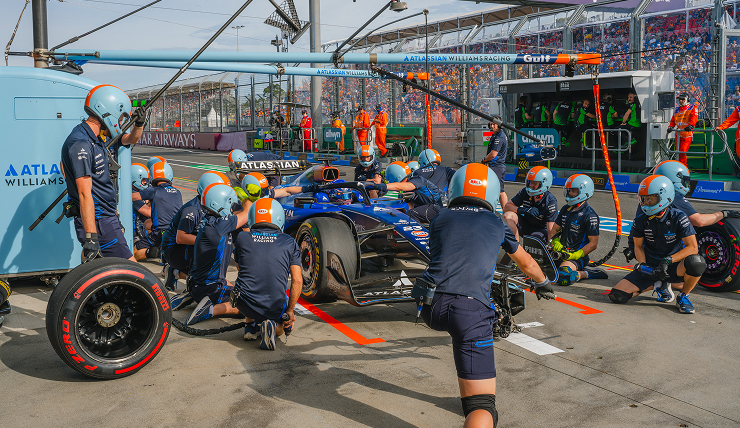
Carlos: I think that’s the beauty of F1, so many people coming together to put together engineering masterpieces – because let’s be honest, F1 cars are some of the most impressive masterpieces I’ve ever seen, especially when you look at everything in detail. An F1 car has tens of thousands of pieces, with every wing and component optimized for weight, shape, and reliability.
It’s 1,200 people coming together to design and manufacture that machine, and make sure it’s reliable. And then Alex and I have the honor – and responsibility – of driving that car for the team.
Fun facts about F1 cars – engineering marvels in motion
- Incredible complexity: A single car contains over 20,000 meticulously engineered parts working in perfect harmony.
- Precision manufacturing: Every part is made with incredible accuracy – within a few millionths of a meter – using CNC machining and advanced 3D printing.
- Aerodynamic perfection: Every curve and wing is sculpted to harness air flow, generating enough downforce that an F1 car could theoretically stick to the ceiling and drive upside down.
- Cutting-edge materials: Carbon fiber composites make F1 cars incredibly strong yet lightweight – about 200 pounds lighter than a Smart car, yet able to withstand forces that would tear apart ordinary vehicles.
- Racing’s gift to drivers: Technologies born in F1 often pave the way for breakthroughs in road car design, improving what we drive every day.
How team culture helps drive performance
Atlassian: Carlos, you’ve raced for some iconic teams. What was the culture like at each team, and how has that influenced your performance?
Carlos: When it’s teams of 1,000 people, culture very much affects the way you go about racing and working together towards one goal. All the teams I’ve been in have been incredibly professional, because F1 is the pinnacle of motorsports.
If you’re proud of the place you work, that’s going to bring performance.
Carlos Sainz
At Atlassian Williams Racing, I’ve found people who are very passionate about the team history and culture. People are proud to be part of that team, and that’s something I like, because if you’re proud of the place you work at, that’s going to bring performance. The fact that it’s Atlassian Williams Racing’s 47th car [one of the longest-running entries in Formula 1], it shows you just how much history this team has. People are passionate and incredibly driven to bring this team back to the front. That proves to me the potential this team can have.
Atlassian Williams Racing: a Formula 1 Icon
- Storied history: Founded in 1977 by Sir Frank Williams, the team secured its first F1 victory just two years later at the 1979 British Grand Prix with Clay Regazzoni.
- Championship pedigree: Atlassian Williams Racing has won nine Constructors’ Championships and seven Drivers’ Championships between 1980 and 1997.
- Century club: One of only five teams in F1 history (alongside Ferrari, McLaren, Mercedes, and Red Bull) to achieve 100+ race wins.
- Racing legends: The team has fielded some of F1’s greatest champions, including Ayrton Senna, Alain Prost, Nigel Mansell, Damon Hill, and Jacques Villeneuve.
On winning as a team before racing as rivals
Atlassian: You’re obviously working together for Atlassian Williams Racing in the Constructors’ Championship, but as drivers, you’re rivals for the individual championship. How does that trust work between you two in such a competitive sport?
Carlos: We both want to become race winners and podium finishers as soon as possible. To get there, we know we need to work together more than most teammates who are already fighting at the front. The more collaboration between Alex and me, the faster we can move the team forward.
I’m sharing what I’ve learned from my experience with other teams – where they were performing better than Williams is right now – and Alex has been open about the strengths and weaknesses of the ’22, ’23, and ’24 cars, and where we’re heading with the ’25 car. That kind of exchange helps us push the team to improve in key areas, whether it’s engineering or simulation tools. The better we collaborate, the faster we recover – and the sooner we get back to the front.
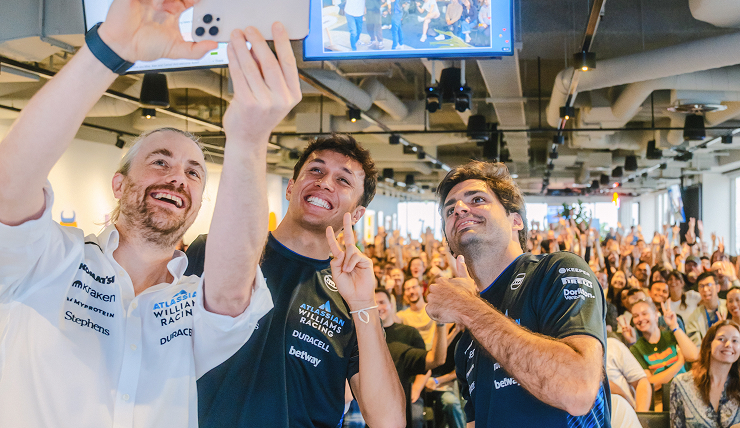
Once Williams is back at the front, that competitive spirit will naturally kick in. It’s normal for paths to diverge a bit when you’re chasing that final tenth of performance. But right now, we’re fully in that collaborative mindset. I’ve been really pleasantly surprised by the attitude of not just Alex, but the entire team, and how committed they’ve been to making me feel welcome and embedded from day one.
How Atlassian is helping Atlassian Willliams Racing unleash the power of teamwork
Atlassian: Do you believe Atlassian can help Williams on the technical side? And if so, where do you believe we can have the most impact?
Alex: Yes, I do believe this partnership can help. If you’ve followed Williams’ story – and I’ve been with the team since 2022 – you’ll know we were behind in terms of technology and software. We were struggling.
Formula 1 is all about efficiency. We’re not there yet, but I believe this partnership can get us there.
Alex Albon
Last year really showed that. We started the season late, and we were behind on parts. When we had offs, we didn’t have replacements. People joked about us going off a lot, but the reality is, we had no parts to swap in. We got caught in a vicious cycle—using metal parts instead of carbon because we didn’t have the time or processes to produce carbon ones. And when those metal parts broke, they caused even more damage to the car. We were kind of injuring ourselves.
I think we’ve been suffering a lot of pain over the last three years. But since the partnership began, I’ve already seen our processes picking up. We’ve still got a long journey ahead, but it’s exciting. We’re going to need this—especially heading into 2026 with the new regulations. There will be so much to track.
Formula 1 is all about efficiency. We’re not there yet, but I believe this partnership can get us there—not just to compete with the top teams, but to become a leader in how efficiently we operate. That’s what’s exciting.
First impressions of the 47th Atlassian Williams Racing car
Atlassian: Alex, what were your first impressions of the FW47? The first time you get into a new car for the year must be an amazing feeling.
Alex: It’s a mix of anxiety and excitement. You know this car has to deliver, because with our focus on 2026, there’s not much room for catch-up. The first lap you drive the car, you know what kind of year you’re getting yourself into. You can feel right away if the car speaks your language, if it’s doing the right things and has a predictable feeling.
The first moments when we drove out on Silverstone, it felt good. The car felt like an extension of my body, and I was in that rhythm. When a car speaks to you and is predictable, you get used to that feeling. What’s interesting is, when we tested the car a few weeks ago in Bahrain, the conditions were tricky – hot, cold, windy – exactly the kind that usually exposes bad cars from good cars. But the car was performing pretty well.

What it takes to come back stronger after a career shake-up
Atlassian: Formula 1 has extreme highs and lows. You both faced challenging periods in your careers – Alex, when you were at Red Bull, and Carlos, when Ferrari replaced you with Hamilton. How do you navigate those periods of self-doubt and adversity in order to achieve the success you have?
Alex: It’s a good question that Netflix is going to love. For me, it was more about reflection. I had a tough year and a lot of it was down to just lacking a bit of confidence, especially experience.
My goal when I got dropped was immediate – it was only to get back into Formula 1, and there was no other real thought process behind anything else. In my head, it was just a game plan: what’s gonna give me the best opportunity to get back onto the grid?
A lot of that was being open to myself and understanding the areas that I need to work on – on track and off track, mentally, psychologically, physically to some point, but also technique-wise, driving-wise, and understanding an F1 car better.
There wasn’t much self-doubt, if I’m totally honest. I was really committed on the process more than anything else, and when you commit to something and focus on that idea of being at your very best, that self-doubt dissipates. I just focused on getting back on the grid, and Williams gave me that opportunity. It felt like a chance to prove everyone what I could actually do and fix my mistakes and weaknesses.
Carlos: In the life of an athlete, you always go through good and bad moments. I honestly wouldn’t even call what happened with Ferrari bad. It was a circumstance – a seven-time world champion decided to go to Ferrari, and someone needed to get dropped. In that case, it was me.
As soon as that happened, I took a couple of weeks to reflect. I made sure I had a strong 2024, which was very important for me as a driver. But then I said, okay, now I’m gonna try and get what’s missing.
I really strongly believe success in F1 comes when you have a good long-term project – when the team and the drivers share a common goal. When the opportunity with Williams came up and I analyzed their situation, I thought: this could be a great chance to get back to the front of the grid.
Maybe it takes two or three years, but investing that time to help bring Williams back – together with Alex – would be the most rewarding thing. If we manage to do it, and prove we deserve to be winning again, I don’t think I’ll ever regret what happened a year ago. Honestly, I’d probably think: thank God it happened, because I found a new home.
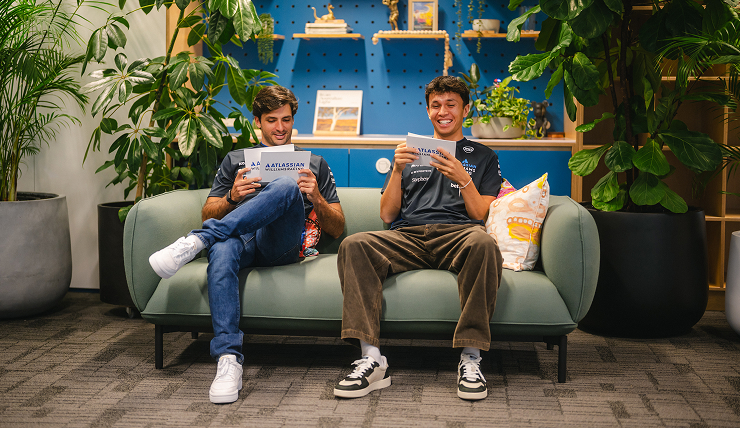
On the magic of Carlos’ hair
Atlassian: Carlos, I wonder how your hair is always perfect when you take off your helmet after a race. What miracle products are you using? Asking for a friend.
Carlos: Unfortunately, I don’t have a magic solution for you. But I can tell you, L’Oreal Paris has noticed. They’ve signed me as their brand ambassador. So maybe I can send you a lot of L’Oreal products? I’ll talk with Atlassian to see if I can make it happen.









